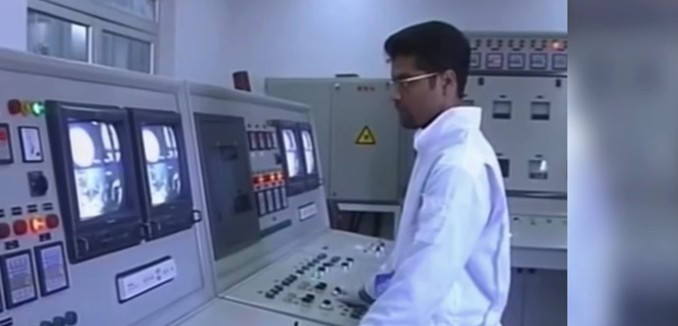The verification mechanisms described in the Joint Comprehensive Plan of Action (JCPOA), as the nuclear deal between Iran and the P5+1 nations is known, are inadequate to detect an Iranian attempt to cheat and achieve nuclear breakout, according to a report (.pdf) published yesterday by the Institute for Science and International Security, a leading nuclear nonproliferation think tank.
The report observed, “Thus, as a general finding, the verification provisions, with some remediation of their implementation or compensation for expected issues, are likely to be adequate during the first ten to fifteen years of the agreement but will be inadequate afterwards if Iran implements its plan to expand its centrifuge program and possibly start a reprocessing program.”
Rick Richman, writing in Commentary, summarized the findings, “[i]n other words, the agreement as it stands is unverifiable without additional steps; and after it sunsets, the verification provisions will be inadequate.”
In particular, the institute’s report questioned two parts of the government’s assertion that environmental sampling will suffice to detect Iranian cheating even if Iran is given 24 days notice before inspectors are allowed to visit suspected nuclear sites.
In an op-ed published in The Washington Post last week, Secretary of State John Kerry and Secretary of Energy Ernest Moniz, both of whom were part of the American negotiating team with Iran, wrote:
If the international community suspects that Iran is cheating, the International Atomic Energy Agency (IAEA) can request access to any suspicious location. Much has been made about a possible 24-day delay before inspectors could gain access to suspected undeclared nuclear sites. To be clear, the IAEA can request access to any suspicious location with 24 hours’ notice under the Additional Protocol of the Nonproliferation Treaty, which Iran will implement under this deal. This accord does not change that baseline. In fact, the deal enhances it by creating a new mechanism to ensure that the IAEA gets the required access and sets a firm time limit to resolve access issues within 24 days. This mechanism provides an important tool for ensuring that Iran could not delay indefinitely.
Most important, environmental sampling can detect microscopic traces of nuclear activities even after attempts to remove evidence. Iran’s own history provides a good example. In February 2003, the IAEA requested access to a suspicious facility in Tehran, and negotiations dragged on as Iran tried to remove evidence. But even after six months, tests revealed nuclear activity despite Iran’s attempt to cover it up.
However, the institute’s report disputes these assertions. For one thing, the report lists a number of prohibited activities that would not be detected by environmental sampling. These activities include explosive testing related to nuclear weapons, a small centrifuge manufacturing plant or even a small centrifuge plant that uses advanced centrifuges. Thus, the report observed, “small-scale activities matter and this is one of the key reasons why inspectors want prompt, or anytime, anywhere access.”
The report cited Olli Heinonen, former deputy director-general of the International Atomic Energy Agency (IAEA) and former nuclear inspector, and his past experiences in Iran.
Heinonen, who oversaw inspections in Iran and is familiar with at least two cases in 2003 in which Iranian technicians covered up uranium enrichment including at the secret Kalaye Electric centrifuge R&D site, concluded that evidence of certain banned nuclear work could be removed from a small secret facility in 24 days. “Much of this equipment is very easy to move,” he said. “Then there is this dispute settlement time which is 24 days: you will use that to sanitize the place, make new floors, new tiles on the wall, paint the ceiling and take out the ventilation.” He added: “Something very similar happened in a couple of cases in 2003, where the IAEA didn’t find any whiff of enriched uranium in certain places where it should have been present.”6 In these cases, Iran did not have to hide its activities within 24 days, as it would in the future. However, it gained valuable experience useful in sanitizing its activities more rapidly.
Kalaye Electric is the example that Kerry and Moniz cited as showing that environmental testing can catch evidence of cheating. However, the institute’s report noted, “Kalaye Electric was a huge embarrassment for the Iranians, who were caught cheating on their safeguards agreement because of an oversight in sanitization.” In other words, had Iran not made a mistake, the sampling wouldn’t have detected the trace of enriched uranium. Sampling is of limited value if Iran is determined to cover its tracks.
In order to overcome these shortcomings, the report calls on the P5+1 nations to “dedicate considerable resources” to seeking out secret Iranian nuclear research sites, though that task is much harder now “since Iran has tightened its security and intensified its counter-intelligence efforts in recent years.”
[Photo: Washington Post / YouTube ]




